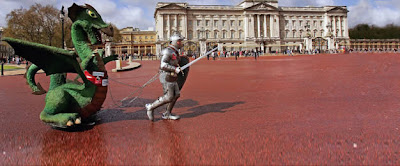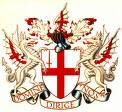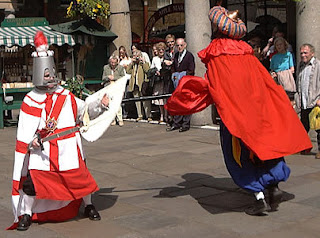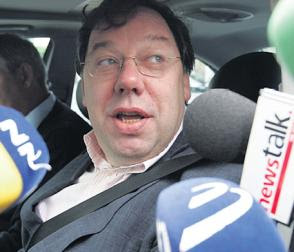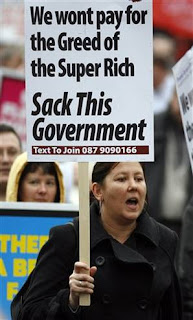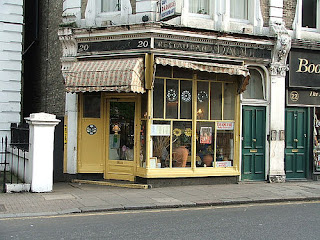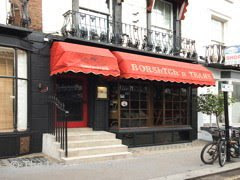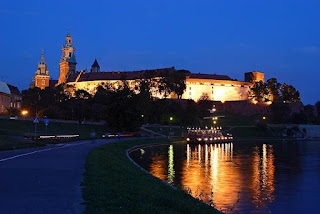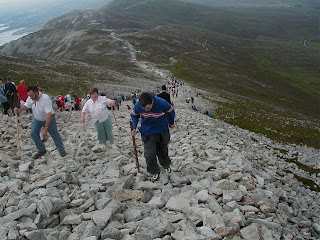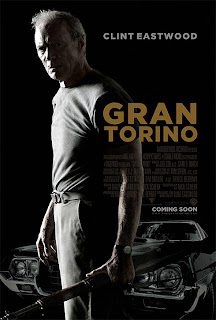
The Celtic Sage has long complained about the endless popcorn movies emanating from the US of A and the stranglehold on movie distribution in the UK which means non-mainstream offerings find it impossible to find a screen. So our wide choice multiplexes fill up with derivative offerings designed by committees of cynical marketing wallahs. Therefore Clint Eastwood’s “Gran Torino” is proof that America can still make great movies which have something to say, and the fact that the 78 year old leading actor is also the Director and turns in a wonderful performance is a bonus. Say what you like but at 78 Clint is still the Man!
Gran Torino is a 2008 American drama film directed by, produced by and starring Clint Eastwood. The film marks Eastwood's return to a lead acting role after four years - his last leading role being Million Dollar Baby. The film features a predominantly Hmong cast, as well as Eastwood's younger son, Scott Eastwood. Eastwood's older son, Kyle Eastwood, provided the score.
Considering that Clint Eastwood's most iconic roles have been serious ones, it's easy to forget that he can be funny — that he possesses terrific timing with his sly sense of humour. He grumbles and growls his way through his most entertaining performance in years in Gran Torino as Walt Kowalski, a Korean War veteran and lifelong auto worker who's disgusted with the changes in his blue-collar, suburban Detroit neighbourhood. There are unshakable shades of Dirty Harry here, as well as Frankie Dunn, the curmudgeonly character he played in 2004's Million Dollar Baby, his most recent screen appearance. At 78, Eastwood combines both the tough and playful sides of his personality — in front of and behind the camera as star and director — with "Gran Torino," which begins in broadly entertaining fashion but ultimately reveals that it has weightier matters on its mind.
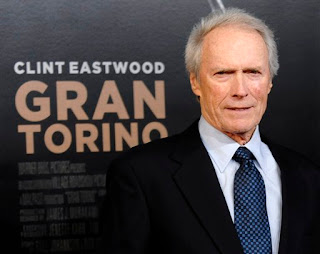
The Man!
Having just buried his saintly wife, all the retired Walt wants to do is be left alone with his dog, his guns and his beer — a seemingly never-ending supply of Pabst Blue Ribbon, which he drinks with an old-school earnestness rather than a kitschy, hip way. The film opens at her funeral service in the local church, and we immediately see that Walt has little patience for other human beings, even those in his own family. He literally snarls at anyone who pisses him off...which is pretty much everyone. He's mad at two people whispering and smiling during the service; he's mad at the way his granddaughter dresses for the event; he's mad at the young priest (Christopher Carley) who was friendly with Walt's wife and who promised her before she died that he'd check in on Walt to make sure the crotchety bastard was doing alright. Every offer for help, every attempt by his grown kids to move Walt out of the terrible neighbourhood where he lives (he is apparently the only white guy still living in the crime-ridden area) is met with something that goes beyond resistance. Walt hates the world and the world responds in kind.
As a sharp-tongued bigot, he certainly doesn't want to be bothered by the growing Asian population all around him, and especially not the Hmong family living next door. Despite hurling every imaginable epithet at these people - Nick Schenk's script is unabashed in its political incorrectness - Walt can't seem to avoid them.
First, he catches shy teenage son Thao (Bee Vang) trying to steal his mint-condition 1972 Ford Gran Torino as part of a gang initiation he's forced into by his thug cousin. Then, cultural tradition dictates that Thao must make up for the transgression by working for Walt for free. (This is basically an excuse for Walt to force the boy, whom he nicknames "Toad," into doing chores around the house in some of the movie's more amusing scenes.)
But the old man also finds an unexpected connection with Thao's older sister Sue (Ahney Her), who shares his blunt-talking attitude. And when he orders a group of gang members at gunpoint to "Get off my lawn" - with echoes of Eastwood's classic "Go ahead, make my day," - he's perceived as a vigilante hero among the Hmong community.

Get off my lawn!
Sure, the premise is predictable. You know from the beginning that Walt's contact with his neighbour’s will soften him. And maybe the performances are a bit stiff from his young actors, all untrained first-timers. But "Gran Torino" becomes more intriguing as the journey its takes us on evolves and grows darker, albeit with Eastwood's trademark, no-nonsense aesthetic.
In the early 1990s, Schenk discovered the history and culture of the Hmong while working in a factory in Minnesota. He also learned how they had sided with the South Vietnamese authorities and its U.S. allies in the Vietnam War, only to wind up in refugee camps, at the mercy of communist forces, when American troops pulled out and the government forces were defeated. Years later, he was deciding how to develop a story involving a widowed Korean War veteran trying to handle the changes in his neighbourhood when he decided to place a Hmong family next door and create a culture clash.
In the 60’s and 70’s Detroit was a wealthy city as the world capital of the automobile industry and its subsequent decline has been dramatic, even Motown Records left the Motor City for LA. The “Gran Torino” is a metaphor for this decline in the manufacturing rust belt areas of America. The name is in itself strange because it was the “muscle car” development of the Ford Fairlane but GT is an abbreviation for “Gran Turismo” or Grand Tourer. However the marketing men at Ford created the name Gran Torino with the latter word referring to Turin, the centre of the Italian auto industry.
(http://daithaic.blogspot.com/2007/08/bella-torino.html )

1972 Ford Gran Torino
Furthermore, the 1972 model, which is Walt Kowalski’s pride and joy as an ex-Ford worker, heralded the sad end of the muscle-car era, and of Detroit's unquestioned dominance of the automotive market. Motown's high-horsepower big-block beasts were suddenly a dying breed, thanks to new emissions regulations, spiralling insurance costs, and a changing social climate. The '72 Gran Torino's highest-horsepower engine option was a lukewarm 248-horsepower 351 V8 - a far cry from the 370 horsepower-plus big blocks of just two years prior. And the road ahead for Detroit held depressing developments like 5-mph bumpers that wreaked havoc on sleek styling, an OPEC oil embargo, and sinking quality control standards. Foreign car manufacturers gained a foothold in the U.S. as American buyers began moving to import cars in larger numbers. Clearly, the makers of Gran Torino didn't just happen upon this car... they chose it very carefully for its symbolic value. Both Walt and his car are products of another time--they don't make 'em like that anymore.
The setting for the movie is not Detroit but its suburb (and separate city) of Highland Park. Henry Ford and his collaborators, the Dodge Brothers, created the modern world and with their mass production methods both unleashed the most strident era of wealth creation and technical innovation in history and changed the lives of millions. Detroit’s very name betrays the French influence as this was an important trading post on Lake St. Clair where the Great Lakes and rivers led into the interior of the continent. The French history can be heard in the names of the cars from here; Buick, Cadillac, Chrysler, de Ville, Chevrolet, Sedan, Limousine, Pontiac.

Henry Ford poses on his 78th birthday,in a suit made from soybeans

Rising on a bank of the Rouge River in Dearborn is Henry Ford's Fairlane Mansion
What is less well known is that Henry Ford never built a single car in Detroit itself but started off in Dearborn before moving his factory to Highland Park. He lived in a Mansion on Lake St. Clair named, like the precursor to the Grand Torino, after the Fair Lane in Cork City, Ireland where his parents lived before they emigrated to America to escape grinding poverty. The Henry Ford Fairlane Estate in Dearborn, MI. sits on 1300 acres. In addition to the residence and its powerhouse, the estate included a summer house, man-made lake, staff cottages, gatehouse, pony barn, skating house, greenhouse, root cellar, vegetable garden, thousand-plant peony garden, ten thousand plant rose garden, a "Santa's Workshop" for Christmas celebrations, maple sugar shack, working farm for the Ford grandchildren built to their scale, agricultural research facilities, and five hundred birdhouses to satisfy Mr. Ford's interest in ornithology. Henry Ford was an interesting person of strong opinions including disgraceful racist and ant-Semitic views and an evangelical belief in the health giving properties of Soybeans! It is ironic given how much the motor car have contributed to the destruction of rural life that he saw his Model-T as helping to preserve rural America and its way of life.
While Gran Torino is entirely of a piece with Eastwood's other work, it also stands apart from his artful films of the past six years in its completely straightforward, unstudied style. There are underlying themes and understated points of view, most fundamentally about the need to get beyond racial and ethnic prejudice, the changing face of the nation and the future resting in the hands of today's immigrants. In a way that clearly could not have been intended, Eastwood could be said to have inadvertently made the first film of the Obama era.
Eastwood has dealt very intelligently and matter-of-factly with race throughout his career -- in Bird, Unforgiven, Million Dollar Baby, Flags of Our Fathers and Letters From Iwo Jima, among others - and in this respect, the key scene here is one in which Kowalski takes Thao to an Italian barber and, with the intention of making him “man up," teaches him the relevant ethnic insults, which, in his world, everyone should be able to withstand and humorously throw back at the perpetrator. For the two older adults, it's a game - a rite of passage that incorporates a healthy, if superficially abrasive, acknowledgment of their differences.
So here we have a movie which speaks of important issues in America. The decline of neighbourhood and traditional industries in a town where a car is today worth more than a house. It deals with an aging America and the alienation of youth, with immigration and racism, with gang culture and gun crime (“Hmong girls go to college, Hmong boys go to prison.”). And how does the American movie industry respond to this movie which deals with themes important to contemporary society?
Well the film was snubbed by the Academy of Motion Picture Arts and Sciences at the 81st Academy Awards, and thus was not nominated for a single Oscar, leading to heated criticism from critics and moviegoers alike. Take this as an inverse endorsement and strike a blow against popcorn dross by seeing “Gran Torino” and The Man for yourself!

